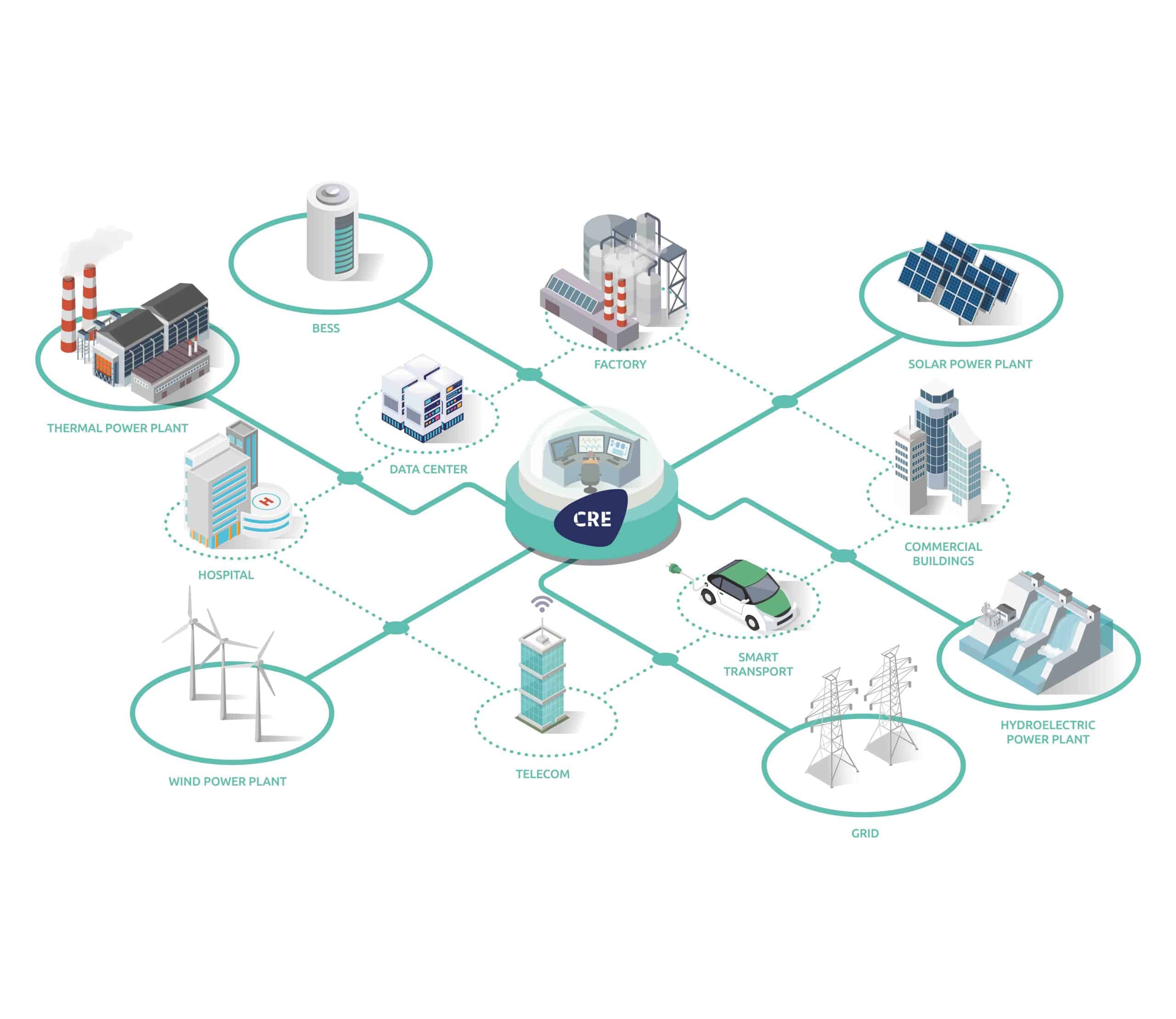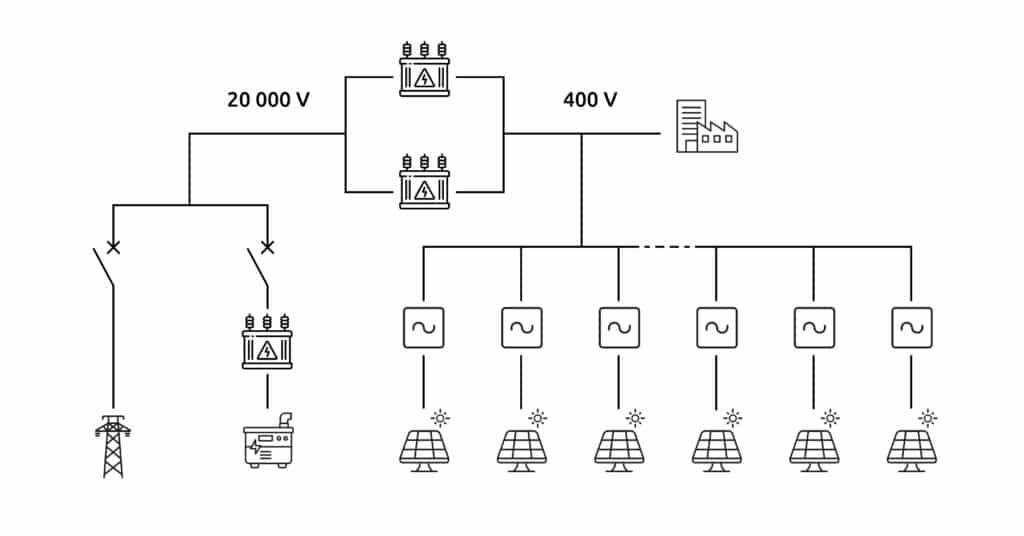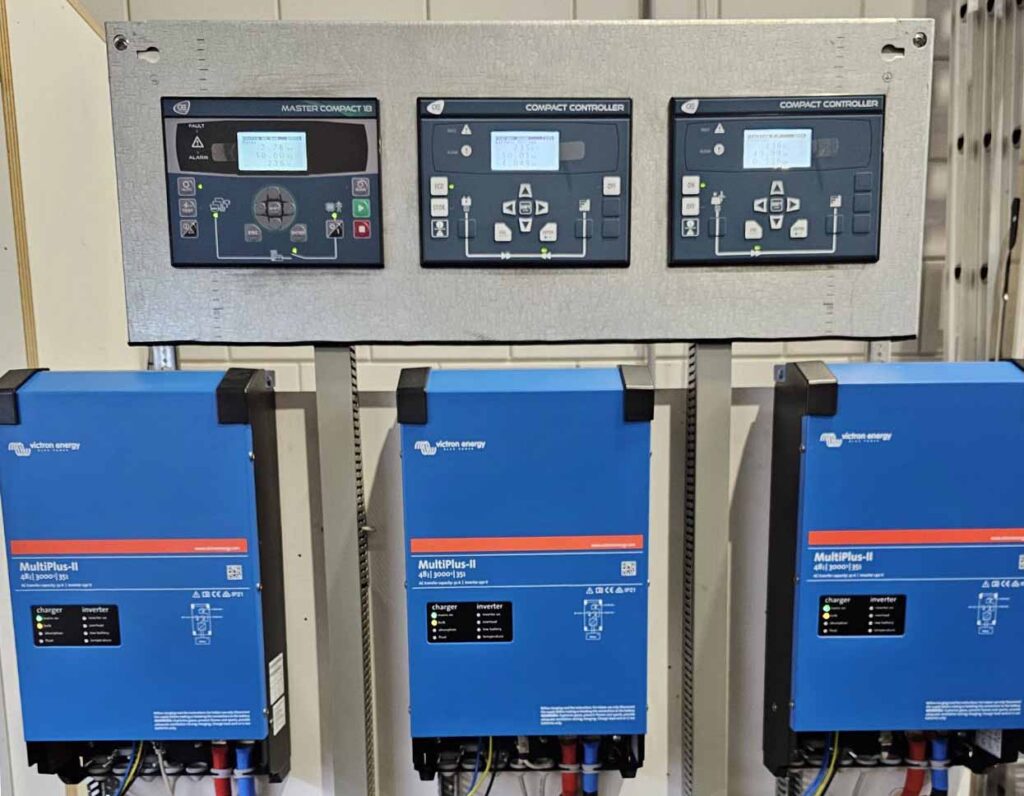How Microgrid Controllers Drive Smarter Energy Management

Introduction to advanced microgrid controller
A microgrid controller is the brain behind modern energy management systems, playing a pivotal role in optimizing the operation of a microgrid. Unlike traditional setups that rely on a single controller, advanced microgrid control systems integrate multiple microgrid controllers—one for each distributed energy source, such as photovoltaic systems, wind turbines, batteries, and generators. These controllers communicate seamlessly to manage the generation, distribution, and storage of energy, ensuring the system operates efficiently whether it’s connected to the main electric grid or operating in island mode.
These integrated controllers are designed to prioritize renewable energy sources like solar and wind, while also managing essential fossil fuel generators when necessary. This multi-controller approach ensures that each energy source is optimally utilized, maintaining stability in voltage and frequency, while avoiding power imbalances or fluctuations in power flow that could harm the system or reduce power quality.

The functionality of microgrid controllers
Understanding the functionality of microgrid controllers is crucial for implementing a robust and sustainable energy solution. These controllers work together to ensure that renewable energy sources are prioritized over fossil fuels, using the latter only when necessary. This coordination helps stabilize the frequency and voltage by carefully managing both the active power and reactive power contributions from each source according to real-time demand and time-of-use energy profiles.
Moreover, the controllers prevent reverse power to generators by managing the active power from other sources, preserving the integrity of the electrical power system. Depending on specific application needs, these controllers can be configured to prioritize certain energy sources to achieve objectives such as exporting a precise amount of active power to the grid. This is particularly relevant for business or industrial use where energy cost, power delivery consistency, and analytics are crucial. By managing power reserves effectively, these systems help prevent outages, ensuring continuous power supply, resiliency, and equipment longevity.
The Importance of microgrids and their controllers
Microgrids, which consist of a group of interconnected loads and distributed generation sources, are increasingly vital in modern power systems. They can operate autonomously or in conjunction with the main grid, with the controllers ensuring seamless integration and operation within the microgrid. This is particularly important for integrating a wide range of energy sources, including photovoltaics, wind power, energy storage systems, and fossil fuel generators.
Microgrids excel in island mode, where they operate independently from the main electric grid during disruptions, maintaining power generation and reliability. The controllers ensure that voltage and frequency are stable, optimizing interaction between various energy resources and improving the overall system resiliency. By leveraging microgrid controllers equipped with advanced monitoring hardware and compatibility with real-time simulation and control tools, systems reduce reliance on traditional power plants and strengthen infrastructure in regions with fragile or heavily loaded transmission and distribution networks.

Benefits of microgrids for energy management
Energy optimization and cost reduction
Implementing advanced microgrid controllers significantly enhances energy optimization and cost reduction. These controllers integrate with sophisticated energy management systems to make real-time adjustments to power demand, ensuring efficient utilization of energy sources like solar, wind, and fuel. By adopting demand response strategies and monitoring power flow with analytic capabilities, the system aligns power consumption with time-of-use pricing and operational priorities.
The system also optimizes the use of renewable energy and battery energy storage, minimizing reliance on carbon-intensive generation. By prioritizing low-carbon sources and managing energy in real time, these controllers contribute to a more sustainable, low-carbon future. This approach aligns with both environmental and business goals, making it a key element in any modern distributed energy strategy.
Reliability and resilience of microgrids
Microgrids are designed to enhance the reliability and resilience of energy systems, offering a sustainable alternative to traditional grids. With multiple controllers managing different sources, microgrids can operate in island mode, disconnecting from the main grid while maintaining operation. This capability ensures stability during disruptions, allowing critical services to continue without interruption.
The advanced automation of these controllers enables microgrids to adapt to real-time changes, using insights from electric power research to improve decision-making. This resilience is crucial in areas prone to natural disasters or where the grid is unreliable. Thanks to their advanced automation and real-time control capabilities, these solutions provide dependable energy delivery and ensure a continuous, integrated power flow—adapted to both critical infrastructure and business continuity needs.
Components and technologies of a microgrid controller
An advanced microgrid controller is a complex system that integrates various components to ensure efficient electric power management and distribution. Key hardware elements include inverters—such as those offered by Victron Energy, a trusted partner for hybrid systems—which convert energy from battery storage, photovoltaic systems, wind sources, and generators into usable electric power. Each controller manages real-time control systems that monitor the operating conditions of the power distribution network.
The distribution system within a microgrid relies on the precise integration of all components, ensuring power is delivered where and when needed. The loop control mechanism maintains the balance between power supply and demand, adjusting according to the condition of the site and system analytics.
Storage solutions like battery energy storage systems ensure cost-effective energy availability even during peak demand. The range, size, and use of these solutions may vary depending on the business project requirements and site configuration. Controllers may be integrated with Department of Energy-certified platforms for performance validation and reporting.
Practical applications and use cases of microgrids
Microgrids are increasingly being adopted by businesses and local communities as strategic assets in their energy management strategy. By combining various distributed energy sources, such as solar, wind, battery energy storage, and generators, microgrids help monitor, manage, and store power efficiently. This application is especially useful in locations where the reliability of the electric grid is uncertain due to environmental or technical constraints.
For business applications, the decision to implement a microgrid will not only optimize operational performance but also support energy analytics and regulatory reporting. Microgrids are built to offer resilience during outages while integrating seamlessly with other control systems. When integrated with analytic dashboards, users can find information about power quality, performance, and delivery in one account, improving decision-making and reducing operational risk.
Contact us for microgrid solutions
Are you looking for a reliable partner to create and manage your microgrid solutions? Look no further! We provide tailored microgrid controllers that ensure efficiency and reliability for your energy needs. Whether you’re a business, a community, or an individual user, our team is here to offer customized solutions that meet your specific requirements.
When you contact us, you will receive a free consultation with our experts who will guide you through the best options available. We work closely with you to create a solution that not only meets but exceeds your expectations. Our goal is to ensure that your microgrid operates seamlessly, providing uninterrupted energy flow, with full integration of distributed generation and support for real-time monitoring and analytics.
Don’t wait any longer—contact us now to explore how our microgrid solutions can transform your energy management. With our expertise, advanced technology, and attention to personal information security, you can rest assured that we will offer the most advanced and user-friendly solutions on the market. Reach out today and let us help you power your future efficiently.